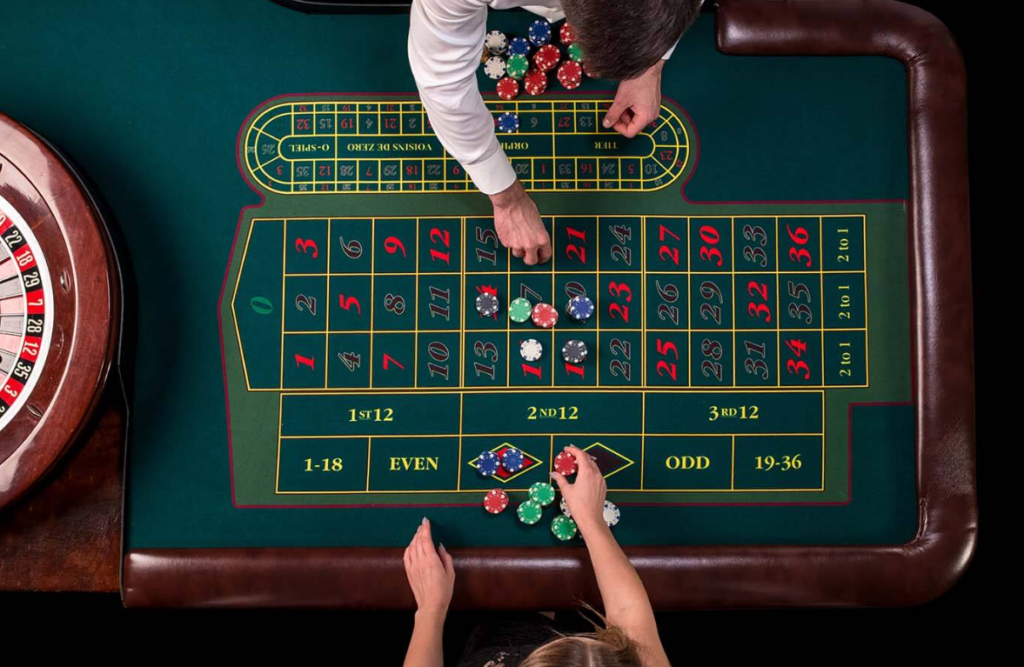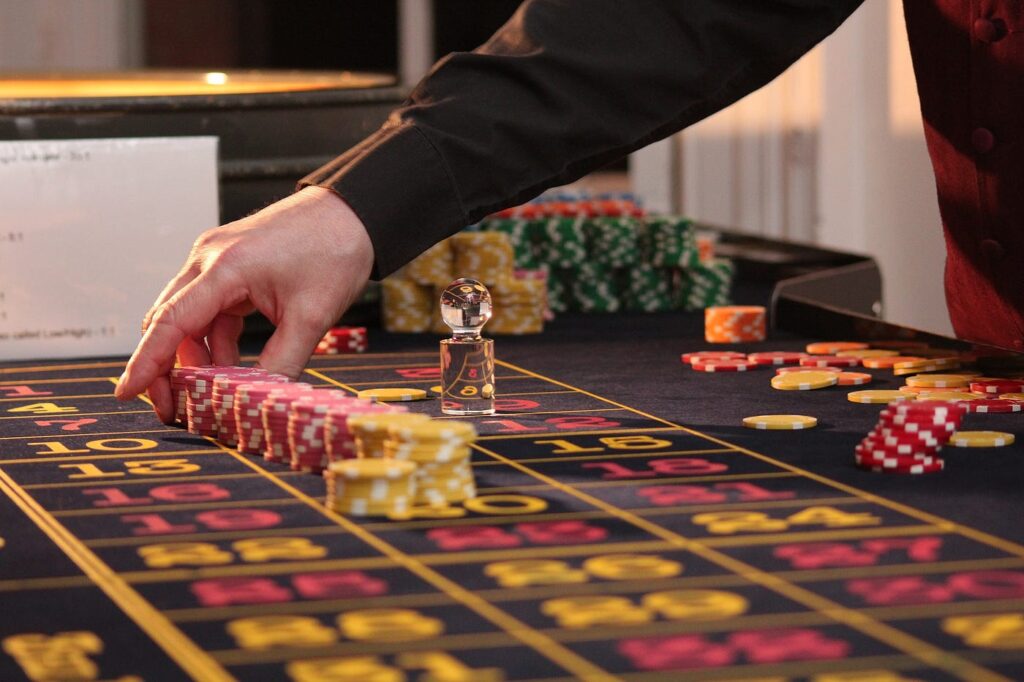Roulette, derived from the French word meaning “little wheel,” is a game that can be traced back to the 18th century, and has since evolved into various forms found in casinos worldwide.
The game’s essence lies in its simplicity, yet it harbours a depth that has given rise to a multitude of strategies and theories about beating the odds.
The game consists of a spinning wheel divided into numbered compartments, a small ball, and a betting table. Players place bets on the table, predicting where the ball will land on the wheel once it comes to rest.
Learning how to play roulette is really easy. Bets can be placed on individual numbers, groups of numbers, or the colors red or black. The dealer spins the wheel in one direction and the ball in another; as the wheel slows, the ball settles into one of the numbered compartments, determining the winning bets.
Importance of Betting Systems
In the realm of roulette, betting systems are as integral as the wheel itself. These systems, often rooted in mathematical concepts, are strategies that players employ in an attempt to beat the odds, or at the very least, mitigate losses. They offer structured approaches to betting, guiding players on how much to wager and when, based on the outcomes of previous spins.
However, it’s crucial to approach these systems with a discerning eye. A common misconception is that they offer a surefire way to win, a myth that has led many an enthusiastic player down a path of disappointment.
The truth is, that roulette is a game of chance, and while betting systems can influence your strategy, they cannot predict or change the outcome of the game.
In the following sections, we will delve into popular betting systems like Martingale, Fibonacci, and D’Alembert, offering a detailed examination, mathematical analysis, and practical applications to equip you with a comprehensive understanding as you step into the enigmatic world of roulette.
Martingale Betting System

In the intricate dance of chance and skill that defines the gambling world, various strategies have emerged, promising players an edge, a way to outsmart the system. One such strategy, with roots as deep and enduring as the game of roulette itself, is the Martingale Betting System.
A double-edged sword, it’s as alluring as it is risky, offering the promise of profit and the peril of significant loss in equal measure.
Historical Background
The Martingale system traces its origins back to 18th century France and was initially associated with a class of betting strategies popular in the game of Faro, or Pharaoh. It has since been adapted to various other casino games, including roulette, becoming one of the most talked-about and controversial betting systems in existence.
The Martingale is a negative progression system, meaning that after a loss, the player increases their bet. The principle is rooted in the belief that a win is bound to occur eventually, and when it does, it will recoup all previous losses and also yield a profit equal to the original bet.
How It Works
The Martingale system is straightforward in its approach. A player begins by choosing a base stake, the initial bet placed on an even-money wager, such as red/black or odd/even in roulette. If the bet wins, the player continues with the same stake. However, if the bet loses, the player doubles the stake for the next spin.
For instance, if a player starts with a $5 bet and loses, the next bet would be $10. If that bet also loses, the next would be $20, and so on. The doubling continues until a win occurs. At that point, all previous losses are recouped, and the player gains a profit equal to the base stake. The player then reverts to the initial base stake and the process begins anew.
The allure of the Martingale lies in its seemingly foolproof nature – in theory, a player could always recoup losses, provided they had an infinite bankroll and no table limits. However, in the real world of finite resources and casino-imposed betting limits, the Martingale can lead to significant financial loss.
Fibonacci Betting System

In the world of gambling, where chance and skill intertwine in a dance as old as time, players have long sought strategies to tip the scales in their favour. Amidst the myriad of systems and theories, the Fibonacci Betting System emerges—a strategy as enigmatic and ancient as the mathematical sequence it is based.
Historical Background
The Fibonacci Betting System is rooted in a number sequence identified by Leonardo of Pisa, who was known as Fibonacci. In his 1202 book “Liber Abaci,” Fibonacci introduced a sequence where each number is the sum of the two preceding ones, starting from 0 and 1.
This sequence, though discovered in the context of Indian mathematics, found its way into various fields, including the realm of gambling.
In the context of casino games, particularly roulette, the Fibonacci sequence is employed as a progressive betting system. It’s a middle-ground approach, not as aggressive as the Martingale but still offering the potential for profit recovery and gain.
How It Works
The Fibonacci Betting System involves increasing your bet following a loss, according to the Fibonacci sequence. The progression starts with the first number in the sequence as your initial bet. If you lose, you move to the next number in the sequence. After a win, you move back two numbers in the sequence. The process continues in this manner.
For example, if the sequence is 1, 1, 2, 3, 5, 8, 13, and so on, and you start with a bet of $1 and lose, your next bet would also be $1. If you lose again, you move to $2, then $3, and so on. After a win, you would move back two numbers in the sequence for your next bet.
The allure of the Fibonacci lies in its mathematical grounding and the slower progression of bets compared to systems like the Martingale. It promises a more controlled approach to betting, reducing the risk of rapid, significant loss.
D’Alembert Betting System

Navigating through the intricate world of gambling, players are often on the lookout for strategies that offer a semblance of control amidst the unpredictable nature of casino games.
The D’Alembert Betting System emerges as a popular choice, renowned for its mathematical foundation and balanced approach. It promises a middle path, steering clear from the aggressive progression of the Martingale and the complexity of the Fibonacci.
Historical Background
The D’Alembert system is named after the French mathematician Jean le Rond d’Alembert, who is credited for laying its foundational principles, albeit in a different context. D’Alembert was a prominent figure in the 18th century, contributing to the fields of physics, mathematics, and philosophy.
The betting system that bears his name is not something he specifically created but is based on his principle of equilibrium, which suggests that over a long period, the number of wins and losses in a game of chance will be equal.
How It Works

The D’Alembert system is particularly popular among players who prefer even money bets, such as red/black or odd/even in roulette. It is a negative progression strategy, albeit less aggressive than the Martingale.
Here’s the methodology: a player starts with a base bet, let’s say $5. Following a loss, the player increases the bet by one unit (another $5 in this case), and after a win, the bet is decreased by one unit. The idea is that after an equal number of wins and losses, a player would be in profit by the number of wins.
For example:
- Bet $5 and lose, balance is -$5
- Bet $10 ($5 + one unit) and win, balance is +$5
- Bet $5 (one unit less after a win) and lose, balance is $0
- Bet $10 and win, balance is +$10
- And so on…
The appeal of the D’Alembert lies in its seemingly balanced approach. It doesn’t lead to rapid increases in bets, and theoretically, the losses are easier to recover. However, like all betting systems, it is not foolproof.
The inherent volatility and unpredictability of casino games mean that players can still encounter significant losses, and the assumption of equilibrium is theoretical rather than guaranteed.







